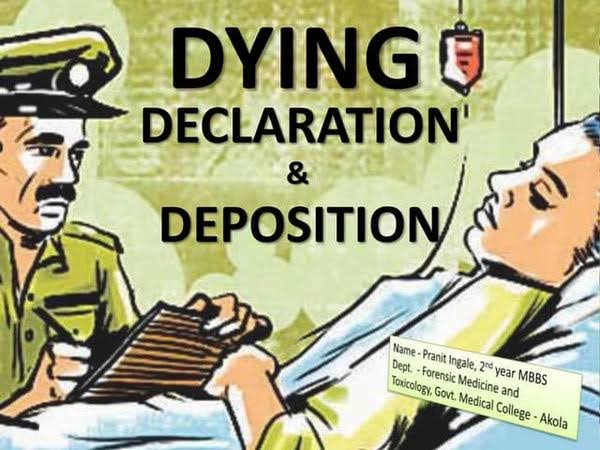Dr. B.P. Saraf, J.@mdashBy this reference u/s 256(1) of the Income Tax Act, 1961, the Income Tax Appellate Tribunal has referred the following question of law to this court for opinion at the instance of the assessee :
"Whether, on the facts and circumstances of the case and proper interpretation of section 147 of the Income Tax Act, was the Tribunal justified in law in upholding the reopening of the assessment ?"
2. The facts of the case are as under :
3. The assessment of the assessee for the assessment year 1959-60 was originally completed on July 31, 1962, and his income was computed at Rs. 23,778. The assessee had filed wealth-tax returns for the assessment years 1958-59 and 1959-60 on July 26, 1962, and in the said returns, the assessee had disclosed circulating capital of Rs. 30,000 but in the wealth-tax returns for the assessment year 1960-61, the circulating capital had gone up to Rs. 1,25,000. Because of this, in the course of the assessment for the assessment year 1960-61, the assessee was asked to explain the sudden increase in his capital. The assessee claimed that the increase was on account of sale of jewellery worth Rs. 16,197 on March 17, 1958, March 18, 1958, and April 17, 1958, and Rs. 78,000 on November 17, 1958. After investigation, the Income Tax Officer accepted the assessee''s claim of sale of jewellery to the tune of Rs. 16,197. The Income Tax Officer, however, did not accept the genuineness of the claim of the assessee of the sale of jewellery on November 17, 1958, for Rs. 78,000. He, therefore, added this amount as undisclosed income in his assessment for the assessment year 1960-61. The assessee took up the matter in appeal before the Appellate Assistant Commissioner. The Appellate Assistant Commissioner set aside the addition of Rs. 78,000 on the ground, inter alia, that the amount could not have been brought to tax in the assessment year 1960-61. The order of the Appellate Assistant Commissioner was confirmed by the Tribunal. Consequently, the Income Tax Officer reopened the assessment for the assessment year 1959-60 u/s 147(a) and issued notice u/s 148 on November 30, 1974. Pursuant to the above notice, the assessment was completed by the Income Tax Officer and a sum, of Rs. 78,000 was added in the income of the assessee for the assessment year 1959-60. The action of the Income Tax Officer was confirmed by the Appellate Assistant Commissioner as well as the Tribunal. Hence, this reference.
4. The only grievance of the assessee in this reference is that the assessment for the assessment year 1959-60 could not have been reopened by the Income Tax Officer on the basis of the information received by him from the assessment under the Wealth-tax Act for the assessment year 1960-61. We find that this controversy now stands concluded against the assessee by the decision of the Supreme Court in
"Now, what needs to be emphasised is that the obligation on the assessee to disclose the material facts - or what are called, primary facts is not a mere disclosure but a disclosure which is full and true. A false disclosure is not a true disclosure. The disclosure must not only be true but must be full - ''fully and truly''. A false assertion, or statement, of material fact, therefore, attracts the jurisdiction of the Income Tax Officer u/s 34/147."
5. The Supreme Court referred to the facts of the case before it and observed (at page 548) :
"Take this very case : the Income Tax Officer says that on the basis of investigation and enquiries made during the assessment proceedings relating to the subsequent assessment year, he has come into possession of material, on the basis of which, he has reasons to believe that the assessee had put forward certain bogus and false unsecured hundi loans said to have been taken by him from non-existent persons or his dummies, as the case may be, and that on that account income chargeable to tax has escaped assessment. According to him, this was a false assertion to the knowledge of the assessee. The Income Tax Officer says that during the assessment relating to the subsequent assessment year, similar loans (from some of these very persons) were found to be bogus. On that basis, he seeks to reopen the assessment. It is necessary to remember that we are at the stage of reopening only. The question is whether, in the above circumstances, the assessee can say, with any justification, that he had fully and truly disclosed the material facts necessary for his assessment for that year. Having created and recorded bogus entries of loans, with what face can the assessee say that he had truly and fully disclosed all material facts necessary for his assessment for that year. True it is that the Income Tax Officer could have investigated the truth of the said assertion - which he actually did in the subsequent assessment year - but that does not relieve the assessee of his obligation, placed upon him by the statute, to disclose fully and truly all material facts. Indubitably, whether a loan, alleged to have been taken by the assessee, is true or false, is a material fact - and not an inference, factual, or legal, to be drawn from given facts. In this case, it is shown to us that ten persons (who are alleged to have advanced loans to the assessee in a total sum of Rs. 3,80,000 but of the total hundi loans of Rs. 8,53,298), were established to be bogus persons or mere name-lenders in the assessment proceedings relating to the subsequent assessment year. Does it not furnish a reasonable ground for the Income Tax Officer to believe that on account of the failure - indeed not a mere failure but a positive design to mislead - of the assessee to disclose all material facts, fully and truly, necessary for his assessment for that year, income had escaped assessment ? We are of the firm opinion that it does."
6. The ratio of the above decision squarely applies to the facts of the present case. Following the same, we answer the question referred to us in the affirmative, i.e., in favour of the Revenue and against the assessee.
7. This reference is disposed of accordingly. There shall be no order as to costs.

